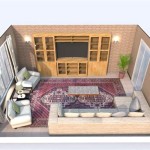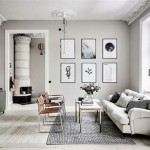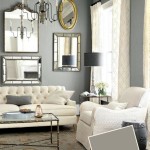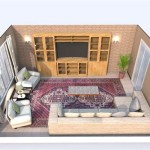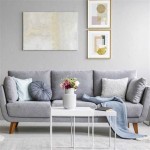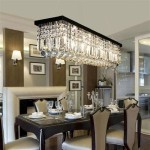Wall Photo Frame Design for Living Room
The living room, often considered the heart of a home, serves as a central gathering space for family and friends. It's a place for relaxation, entertainment, and creating lasting memories. Decorating the living room effectively can significantly impact the overall ambiance and create a space that reflects the homeowner's personality and style. Wall decorations, particularly photo frames, play a crucial role in achieving this goal. They not only enhance the aesthetic appeal but also personalize the space with cherished memories and artwork.
Strategic placement and thoughtful design of wall photo frames can transform a bland living room into a visually appealing and emotionally resonant environment. The selection of frames, arrangement of photos, and integration with existing decor are all important considerations. Understanding the principles of design and the various options available can help homeowners create a stunning and personalized focal point in their living room.
This article explores various aspects of wall photo frame design for living rooms, providing insights into different styles, layouts, and considerations for creating a visually harmonious and personally meaningful space.
Selecting the Right Photo Frames
The first step in designing a captivating wall photo frame display is choosing the right frames. The selection process involves considering various factors, including frame style, material, size, and color. The chosen frames should complement the existing decor of the living room and enhance the overall aesthetic.
Frame style encompasses a wide range of options, from traditional and ornate designs to modern and minimalist styles. Traditional frames often feature intricate details, carved embellishments, and rich finishes, making them suitable for classic or vintage-inspired living rooms. Modern frames, on the other hand, typically have clean lines, simple shapes, and neutral colors, making them ideal for contemporary or minimalist spaces. The choice of frame style should align with the overall design aesthetic of the living room.
Frame material is another essential consideration. Common frame materials include wood, metal, and plastic. Wooden frames offer a warm and natural look, and they are available in various finishes and wood types. Metal frames provide a sleek and modern aesthetic, and they are often more durable than wooden frames. Plastic frames are typically the most affordable option, and they are available in a wide range of colors and styles. When choosing a frame material, consider the durability, aesthetic appeal, and overall budget.
Frame size is also a crucial factor. The size of the frame should be proportionate to the size of the photo or artwork it will hold. Overly large frames can overwhelm smaller photos, while overly small frames can make larger photos appear cramped. It is generally recommended to choose frames that are slightly larger than the photos, allowing for a mat border that draws attention to the image. The size of the frames should also be considered in relation to the available wall space. A large wall can accommodate larger frames or a gallery wall with multiple frames, while a smaller wall may be better suited to a single statement frame or a small grouping of frames.
Frame color should complement the colors in the photo and the surrounding decor. Neutral colors, such as black, white, and gray, are versatile and can work well with a variety of photos and color schemes. However, bolder colors can be used to create a more dramatic effect. When choosing a frame color, consider the overall color palette of the living room and the dominant colors in the photos.
Arranging Photo Frames: Layout and Composition
Once the photo frames have been selected, the next step is to arrange them on the wall. The arrangement of photo frames can significantly impact the overall visual appeal of the display. There are various layout options to consider, ranging from symmetrical arrangements to asymmetrical arrangements. The chosen layout should be visually balanced and create a focal point in the living room.
Symmetrical arrangements are characterized by a balanced and orderly appearance. They typically involve arranging frames in a grid pattern, with equal spacing between each frame. Symmetrical arrangements are often used to create a sense of formality and sophistication. This type of arrangement works well with frames that are the same size and shape, creating a cohesive and unified look. Symmetrical arrangements can also be achieved with frames of different sizes, as long as the overall layout remains balanced and symmetrical.
Asymmetrical arrangements are more informal and dynamic. They involve arranging frames in a less structured manner, with varying spacing and frame sizes. Asymmetrical arrangements can create a sense of visual interest and personality. This type of arrangement works well with frames of different styles and materials, creating a more eclectic and unique look. When creating an asymmetrical arrangement, it is important to maintain a sense of visual balance. This can be achieved by grouping frames of similar colors or themes together, or by using a larger frame as an anchor point.
Gallery walls are a popular trend in interior design. They involve creating a large display of photo frames, often spanning an entire wall. Gallery walls can be symmetrical or asymmetrical, and they can incorporate a variety of frame styles, sizes, and materials. When creating a gallery wall, it is important to plan the layout in advance. This can be done by creating a mock-up on the floor or by using a digital design tool. The spacing between the frames should be consistent, and the overall layout should be visually balanced.
In addition to layout, composition is another important consideration. Composition refers to the arrangement of elements within each frame. A well-composed photograph will be visually appealing and draw the viewer's eye to the subject. When selecting photos for the wall display, choose images that are well-composed and tell a story. Consider the colors, textures, and shapes within each image, and how they relate to the overall design of the living room. Balance is key to a good composition. Consider the rule of thirds, which suggests dividing an image into nine equal parts and placing the subject at one of the intersections of these lines.
Integrating Photo Frames with Living Room Decor
The final step in designing a wall photo frame display is to integrate it with the existing decor of the living room. The photo frames should complement the color scheme, style, and overall aesthetic of the space. This can be achieved by considering the colors of the walls, furniture, and accessories.
Color harmony is essential for creating a visually cohesive living room. The colors of the photo frames should complement the colors of the walls and furniture. If the walls are painted in a neutral color, such as white or gray, then you can use photo frames in a variety of colors. However, if the walls are painted in a bold color, then it is best to choose photo frames in neutral colors or colors that complement the wall color. Consider using a color wheel to find harmonious color combinations.
Style consistency is also important. The style of the photo frames should align with the overall style of the living room. If the living room has a traditional style, then you should choose traditional photo frames with ornate details. If the living room has a modern style, then you should choose modern photo frames with clean lines and simple shapes. Consider the materials used in the existing decor, such as wood, metal, or glass, and choose photo frames that incorporate similar materials.
Scale and proportion are important considerations when integrating photo frames with living room decor. The size of the photo frames should be proportionate to the size of the wall and the furniture. A large wall can accommodate larger frames or a gallery wall, while a smaller wall may be better suited to a single statement frame or a small grouping of frames. When choosing the size of the frames, consider the size of the furniture in the room. A large sofa may require larger frames to balance the visual weight, while a smaller sofa may be overwhelmed by overly large frames.
Lighting plays a critical role in highlighting wall photo frames. Adequate lighting can enhance the colors and details of the photos, making them more visually appealing. Consider using track lighting or spotlights to illuminate the photo frames. The lighting should be directed at the frames, creating a focal point in the living room. Avoid using harsh or direct lighting, as this can create glare and make it difficult to see the photos. Instead, opt for soft and diffused lighting. Consider incorporating artwork lighting fixtures, which are specifically designed to illuminate artwork and photographs.
In conclusion, designing a visually appealing and personalized wall photo frame display for a living room requires careful consideration of frame selection, arrangement, and integration with existing decor. By following these guidelines, homeowners can create a stunning and emotionally resonant space that reflects their personality and cherished memories.

14 Pieces Set Solid Wood Picture Photo Frame White Black Wall Hanging Combination Living Room Decration Etsy

How To Create A Gallery Wall Guide Best Ideas Crate Barrel

How To Create The Right Gallery Wall For Your Space

Custom Photo Frames Tree Of Life Personalized Family Collage Wood Wall Decoration Living Room Hangings Anniversary Gift Etsy

Artbyhannah 6 Pack Gallery Wall Art Frame Set With Prints Picture Multi Size For Living Room Home Decoration

Living Room 3 Set Wall Hanging Decorative Canvas Picture Frames And Ps Price Made In Com

Artbyhannah 4 Piece 10x10 Inch Botanical Gallery Wall Frame Set White Square Picture For Home And Office

3 Pieces Modern Geometric Abstract Wall Decor Set Canvas Print With Frame Living Room Homary

51 Inspiring Small Living Rooms Using All Available Space

Living Room Gallery Wall Love Grows Wild

